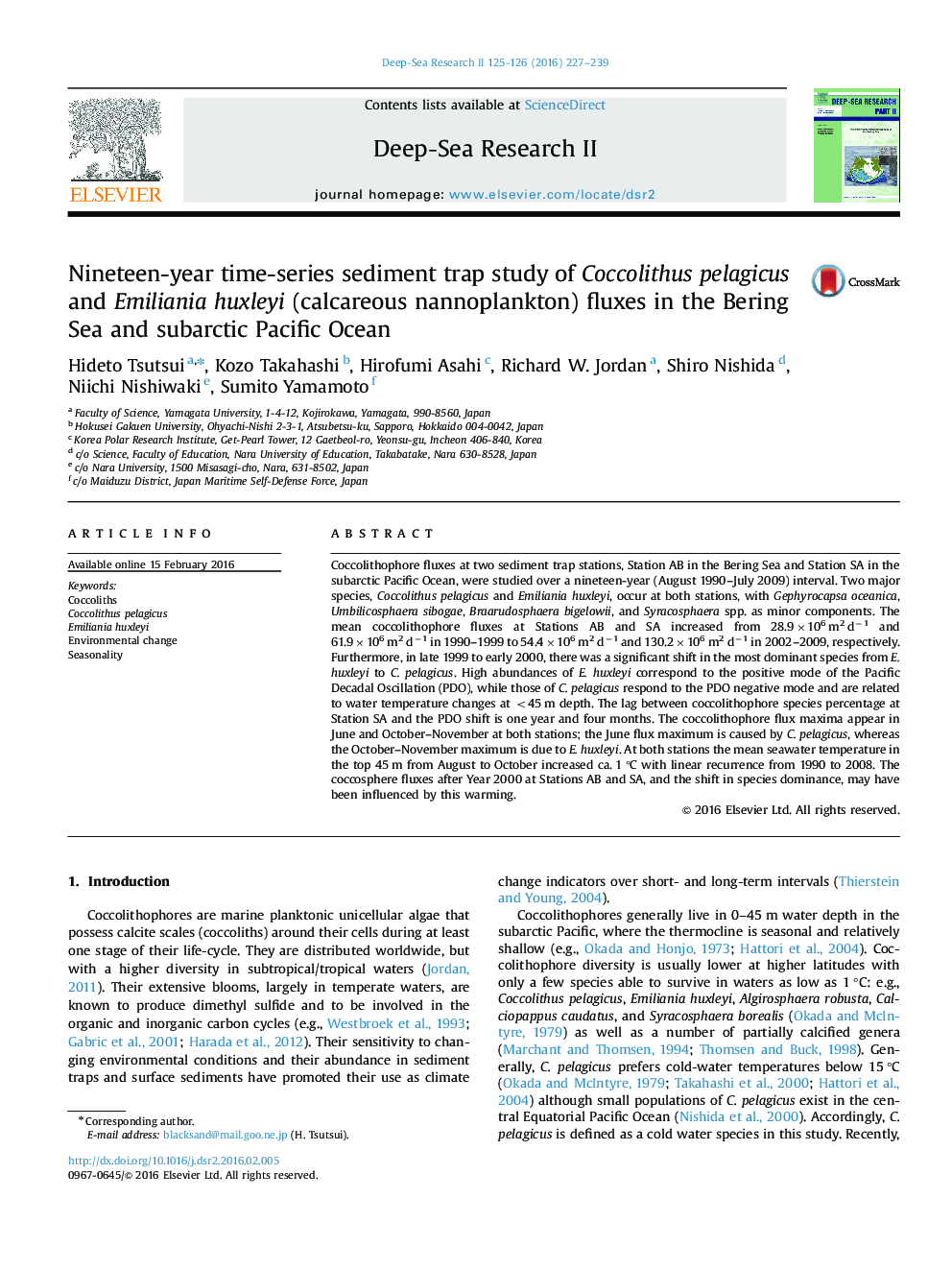| کد مقاله | کد نشریه | سال انتشار | مقاله انگلیسی | نسخه تمام متن |
|---|---|---|---|---|
| 4536119 | 1626416 | 2016 | 13 صفحه PDF | دانلود رایگان |

Coccolithophore fluxes at two sediment trap stations, Station AB in the Bering Sea and Station SA in the subarctic Pacific Ocean, were studied over a nineteen-year (August 1990–July 2009) interval. Two major species, Coccolithus pelagicus and Emiliania huxleyi, occur at both stations, with Gephyrocapsa oceanica, Umbilicosphaera sibogae, Braarudosphaera bigelowii, and Syracosphaera spp. as minor components. The mean coccolithophore fluxes at Stations AB and SA increased from 28.9×106 m2 d−1 and 61.9×106 m2 d−1 in 1990–1999 to 54.4×106 m2 d−1 and 130.2×106 m2 d−1 in 2002–2009, respectively. Furthermore, in late 1999 to early 2000, there was a significant shift in the most dominant species from E. huxleyi to C. pelagicus. High abundances of E. huxleyi correspond to the positive mode of the Pacific Decadal Oscillation (PDO), while those of C. pelagicus respond to the PDO negative mode and are related to water temperature changes at <45 m depth. The lag between coccolithophore species percentage at Station SA and the PDO shift is one year and four months. The coccolithophore flux maxima appear in June and October–November at both stations; the June flux maximum is caused by C. pelagicus, whereas the October–November maximum is due to E. huxleyi. At both stations the mean seawater temperature in the top 45 m from August to October increased ca. 1 °C with linear recurrence from 1990 to 2008. The coccosphere fluxes after Year 2000 at Stations AB and SA, and the shift in species dominance, may have been influenced by this warming.
Journal: Deep Sea Research Part II: Topical Studies in Oceanography - Volumes 125–126, March–April 2016, Pages 227–239